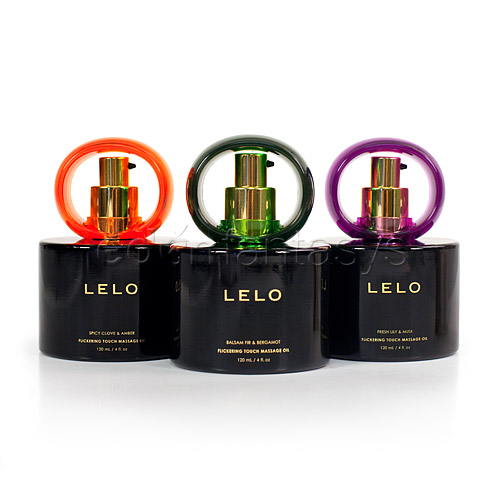Luxury in a bottle..
The texture is smooth and silky feeling. I love the consistency of this oil. It pours into the palm of my hand perfectly and doesn't splatter everywhere. It does not feel sticky or greasy. If you wipe it off with a damp washcloth, it comes off easily and leaves no trace. This is truly a luxury product. All of the smells are Heavenly and I LOVE them.
Can I give them 10 stars?
Can I give them 10 stars?
Published:
Pros
* Scents
* Quality
* Luxury Item
* Quality
* Luxury Item
Cons
* Price
Follow-up commentary
1 month after original review
I am in love with this set. It's luxury for the skin and I really love all of these! These luxury oils make my skin feel like a million bucks!
This product was provided free of charge to the reviewer. This review is in compliance with the
FTC guidelines.
EdenFantasys Review Program
- Get Free Toys
- Enjoy Special Deals
Comments
Subscribe to comments
-
 Great review, thank you!
Great review, thank you! -
 omigosh I want this now! Thanks for the review!
omigosh I want this now! Thanks for the review! -
 thx for the review
thx for the review -
 Just after reading your review I want to buy this ASAP. I love your review and pictures. Seems like this could be the best massage oil on Eden. AWESOME reivew!!! Thanks for sharing
Just after reading your review I want to buy this ASAP. I love your review and pictures. Seems like this could be the best massage oil on Eden. AWESOME reivew!!! Thanks for sharing -
 You are welcome. I like for people to get the best idea if it may be right for them or not.
You are welcome. I like for people to get the best idea if it may be right for them or not. -
 Thanks
Thanks -
 Thanks for the video, pictures and informative review!
Thanks for the video, pictures and informative review! -
 Amazing review. Thank you!!
Amazing review. Thank you!! -
 Thanks for the info.
Thanks for the info.
Forum
| Discussion | Posts | Last Update |
|---|---|---|
| Which massage kit do you like? | 6 | |
| Which scent do you like best? | 11 | |
| Flickering Touch Massage set. | 6 |
- See all discussions
Thank you for viewing Flickering touch massage set – oil discontinued review page!












